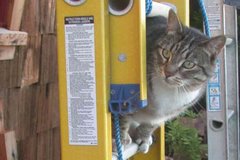Seismic Reflection and Mulitbeam Sonar Bathymetry
The official CASEIS Cruise Blog is located here: http://www.ipgp.fr/caseis This official blog is written by my shift-mate Lola Johannes.
Site Selection with Sunsets and Sunrises
June 15, 2016
- We are collecting both shallow sub-bottom CHIRP seismic reflection data as well as deeper streamer seismic reflection data. The CHIRP data (the lower image below) tells us what sediments we might be able to core, how deep we could core, and the relative material properties of those sediments. If the sediments are too sandy or stiff, we cannot core as deeply into those sediments. Otherwise, the core will either (1) hit the stiff sediments before being fully embedded into them, causing the core barrel to bend or (2) get stuck in the sediments causing a large tension on the cable when being pulled out. So far on this cruise, we have had a minor core barrel bend and also have had a core stuck. The deeper seismic data help us interpret the relative age of the sediments observed in the CHIRP data. If the potential coring location has been a depocenter for a long time (a place where sediments pile up, like a sedimentary basin), then we will see these sediments in the deeper seismic data. The upper image below is the streamer seismic data in the same general region as the CHIRP data. We see that this sedimentary basin is a long lived depocenter (at least into the Pleistocene (up to 2.56 Ma), perhaps even longer).

- There are three wires trailing the ship for this streamer seismic survey (they are the “Streamers”). This photo shows the center streamer as a white cable leaving the stern of the ship. On the starboard and port sides, there are two more streamers. One may observe the white circles of bubbles formed when a sound waves are projected to the seafloor.
- Here Dr. Beck is using the acquired multibeam sonar bathymetry data to help us locate a good coring site. The blue represents deeper water and yellow represents shallower water.
- This is another beautiful sunset to a very successful work day.
- Here are, from left to right, Dr. Feuillet, Chloe, and Lola.
- Here are Quentin #1 and Olivia.
June 16, 2016
- And then another beautiful sunrise to begin the next day. The lucky part about our shift is that on one shift we see the sunrise (4-8 AM) and on the other shift, we see the sunset (4-8 PM).
- Here are, from left to right, Quentin #1, Gaelle, Marie, and Quentin #2.













No comments:
Post a Comment